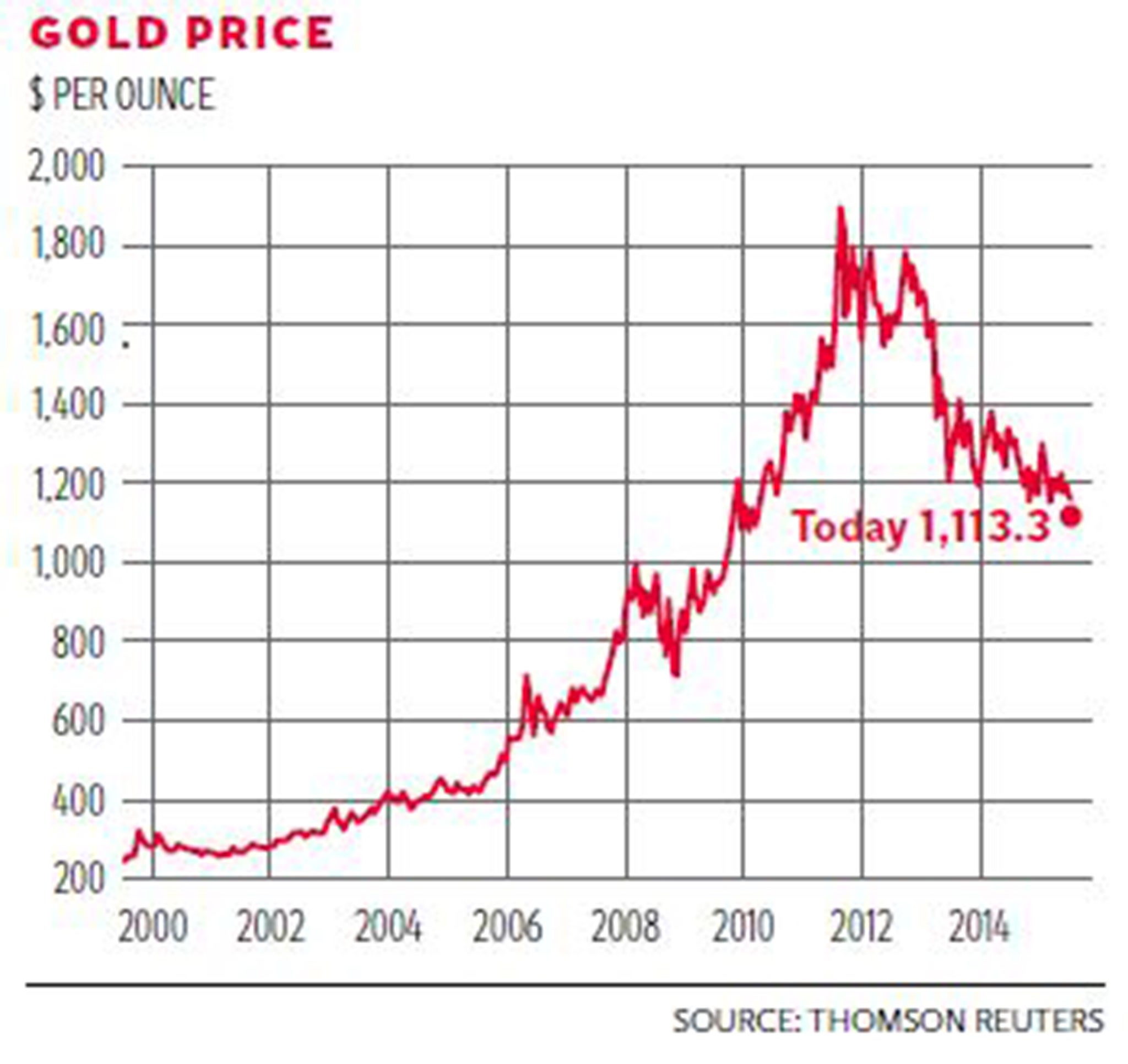Mystery of the great gold sell-off
Five tonnes of gold were dumped on the Shanghai exchange yesterday, pushing the price to its lowest since 2010. Has this safe haven had its day? Russell Lynch reports

For gold bugs – those investors bullish on the precious metal – the commodity’s key attraction has always been as a store of wealth. Fiat currencies may swirl on the seas of international money markets, but the old adage goes: an ounce of gold once bought a Roman soldier a fine suit of armour, in Shakespeare’s time it paid for a doublet and hose, and today it would get you an Armani suit.
That comfortable certainty was shaken by the precipitous fall in the gold price this week, which slumped more than 4 per cent in a matter of minutes in a mini “flash-crash” in China. As soon as Shanghai’s gold exchange opened, around five tonnes of the precious metal was dumped on to the market by a mystery seller, pushing the price as low as $1,088.05 an ounce – its weakest since March 2010.
That’s little more than half the all-time high of $1,923 seen in September 2011 in the most brutal phase of the eurozone’s debt crisis, when it seemed that the very existence of the single currency was at stake and investors ran for cover to the traditional safe haven. The volumes traded in Shanghai were more than a hundred times the usual amount, at a time when markets in the West were closed.
According to experts, the huge trade sent the price crashing through “stop loss” barriers put in place by investors to protect themselves against price falls, triggering yet more automatic sell-offs.
Ross Norman, chief executive of gold broker Sharps Pixley, said a large fund or investor looking to bet against the gold price – selling off the metal to drive the price down and then buying it back as a profit – was most likely to be behind the fall. “Clearly it was somebody who was extremely keen to trade the market short,” he said.
“If you wanted to get out you would do it when your buyers are there and not when there is extremely low liquidity.”
The timing – a Japanese holiday – also meant the market was even thinner than usual. Another possibility is that a major investor hit by the recent calamitous plunge in the Chinese shares cooked up a plot to regain losses elsewhere in equity markets, or indeed was forced to sell the gold to meet margin calls on underwater equity positions.

Victor Thianpiriya, a commodity analyst at ANZ Bank said: “The nature, size and timing of the heavy selling suggests a market participant was taking advantage of low liquidity or some sort of forced selling had taken place. We will only know in hindsight, but the damage to gold has been done.”
London’s main listed gold miners, Randgold Resources, Fresnillo, Petropavlovsk and Acacia Mining, bore the brunt of the damage, revealing losses of more than 3 per cent.
But nerves were already frayed in the gold market before yesterday’s plunge. Investors have been pulling cash out of gold-tracking exchange traded funds, which are essentially derivatives based on the metal’s price but without the costs in physically buying and selling it.
Before the weekend, China’s central bank shocked traders by declaring its gold holdings for the first time in six years. China said it held 1,658 tonnes of gold – a 57 per cent rise on 2009, but less than half the level guessed at by market watchers – and had added to its stocks at just 100 tonnes a year on average.
Moreover, gold actually fell slightly as a share of overall reserves in China, the world’s second biggest economy. The People’s Bank of China’s revelation also meant that in terms of tonnage, China has a fraction of the US’s 8,133 tonnes and also lags behind Germany, Italy and France, according to Sharps Pixley’s figures. Now market-watchers are nervously eyeing the next technical level for gold – the February 2010 lows of $1,044 an ounce.
The bigger macroeconomic picture is also bad for gold, as central bankers across the world prepare the ground to raise interest rates for the first time in nearly a decade. US Federal Reserve chair Janet Yellen has told Congress that the US central bank is on course to hike this year if the US economy expands as expected. Bank of England Governor Mark Carney also capped increasingly hawkish noises from Threadneedle Street with recent comments that markets should be on the alert for a rise “around the turn of the year”.
Good news for the dollar is generally bad news for gold. The metal may be a store of wealth in more turbulent times, but when other assets are offering higher returns, why hold it? It’s also traditionally a hedge against inflation – but the cost of living is at or close to zero in several major economies, including the UK. So again, why hold it?
Analysts at ABN Amro said the fall “has been in the making for some time now” with even the saga over Greece’s potential default not able to win investors into the precious metal over the draw of the stronger US dollar and improving sentiment in financial markets.
The bank added: “Our target for the end of this year is $1,000 an ounce. Our target for the end of September of $1,100 per ounce is probably too bullish.”
As chancellor, Gordon Brown picked the bottom of the market in 1999 when he sold off nearly 400 tonnes of the UK’s gold reserves at $275 an ounce in a decision his successor, George Osborne, never tires of mocking.
But after a rally lasting more than a decade, the gold bugs are firmly in the minority as the bears move in.
Join our commenting forum
Join thought-provoking conversations, follow other Independent readers and see their replies
Comments
Bookmark popover
Removed from bookmarks